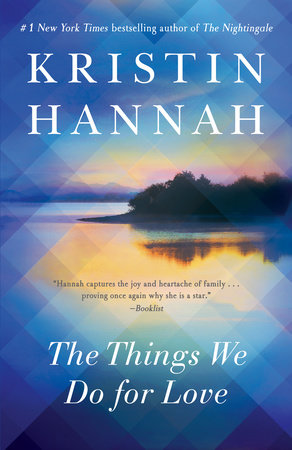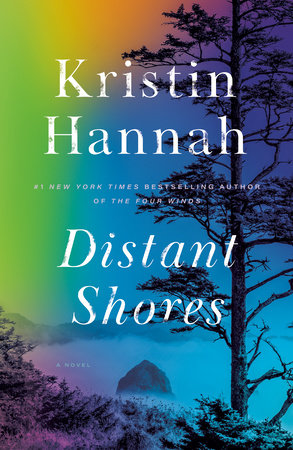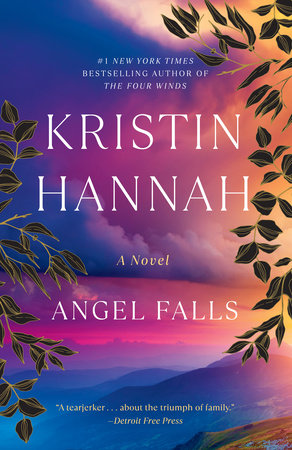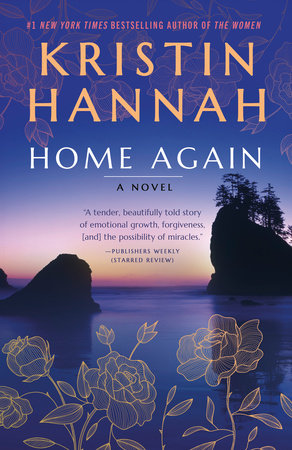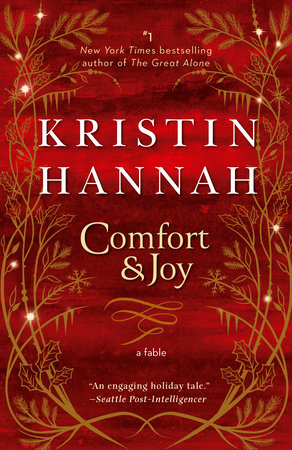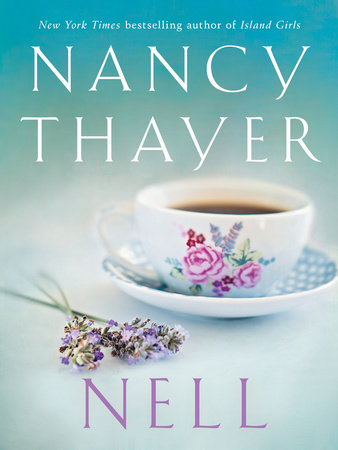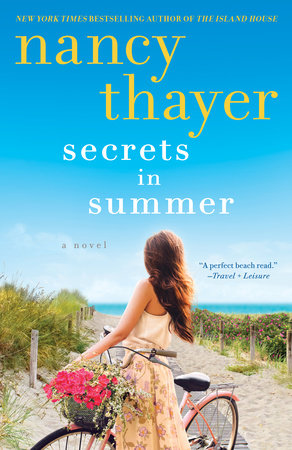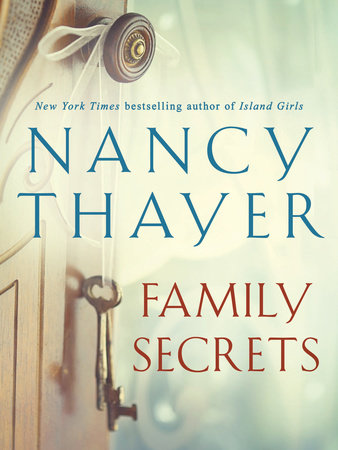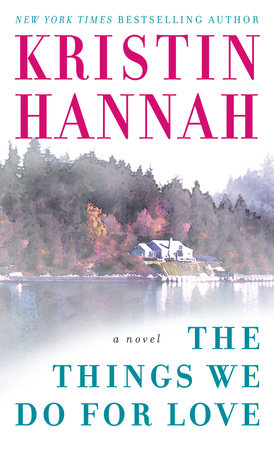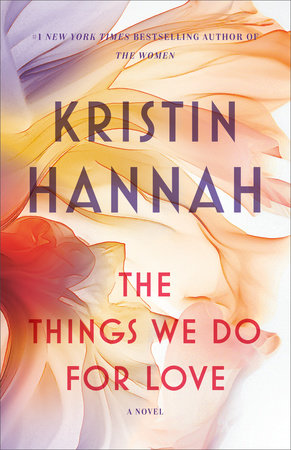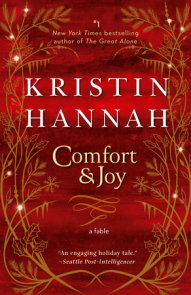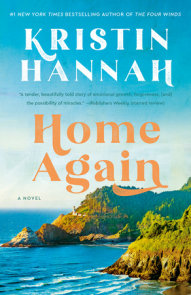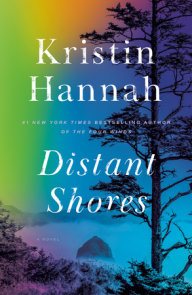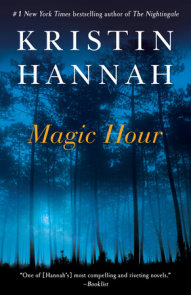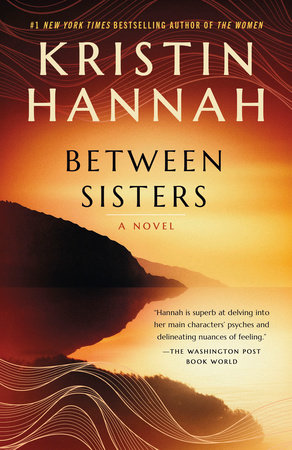Author Q&A
A Conversation with Kristin Hannah
Random House Publishing Group: What inspired you to write this story?
Kristin Hannah: This story, like so many of my novels, rose from my own experiences. When I reached my midforties, I became aware that some of my girlfriends were having trouble conceiving children. Difficulties with fertility came as a shock to a lot of women my age, I think; many of us married later in life than previous generations had, and then waited to establish our careers before trying to have children. I was fortunate enough to have had my son early, but it was heartbreaking to see the road that so many good friends were suddenly forced to take: expensive in vitro procedures, adoptions that failed, miscarriages. Several previously strong marriages crumbled under the pressure of these lost dreams.And, like all writers, I took this pain and studied it and thought, “What if . . .” and that was the beginning of the idea for The Things We Do for Love.
RHPG: Did you have to research adoptions for this book? How about the restaurant business?
KH: Those are two of the areas that required research. For this book, there were many issues that arose—infertility, divorce, adoption, teen pregnancy, and grief. The restaurant business was much more fun to research. It gave me lots of excuses to drag my hus- band out to dinner, especially out of town. The wild Washington coast, where this book is set, is one of my favorite places in the Northwest and I rarely miss an opportunity to visit it. Especially in the name of research.
RHPG: Lauren was always planning ahead and had big dreams for her future. Did you dream of becoming an author when you were a teenager?
KH: Actually, no. I never dreamed of being an author. It’s odd now, looking back on it, but even though I loved reading and loved all forms of writing, I never even considered fiction. If I had to guess, I’d say it was because I grew up in a small town and really, people just didn’t think like that. Writing, and getting published, was like dreaming of becoming a movie star, the kind of thing that happened to other people from more glamorous lives. It was my mother who gave me a gentle push in that direction, and I think it surprised us both. I like to think that she’s watching down on me now and smiling, saying to her friends in Heaven, “I told her she could do it.”
RHPG: The mother-daughter theme is one that you like to examine in many of your novels. In The Things We Do for Love, you explore different kinds of mother-daughter relationships—a woman who desperately wants a child, a mother who doesn’t want the child she has, a mother that isn’t ready for a child, a mother who wants to protect her child. Did you find any of these relationships hard to write about?
KH: You’re right. I do return time and time again to the issue of motherhood. Perhaps it’s because I lost my own mother so early, or because being a mother is so much a part of who I am. All I know is that the mother-child bond is one of the strongest, most resilient, most complex connections in nature, and I am constantly fascinated by its various permutations. In The Things We Do For Love, the most difficult of these relationships for me was really the teen parent. I didn’t want to look at Lauren’s situation from the distance of my own life and my own years; I really wanted to try to become a teenager again and to examine how she would have felt in such a frightening time. It’s so easy to judge people in life for the choices they make. One of the great challenges of fiction writing is not to judge one’s characters, but just to let them be and flourish and follow their lead. Honestly, Lauren’s ultimate choice in this novel is not what I expected it would be, and I had to kind of go with the flow on it.
RHPG: Which character did you find to be the most challenging to write?
KH: The most challenging character was Angie. She was so broken by her lost dreams and so unhappy. I kept wanting to fix her quickly and make it all better. Must be the mother in me.
RHPG: Despite being dead, at times, “Papa” DeSaria felt very much like he was right there with all the other characters. Did you plan it to be this way or did his character evolve as you were writing?
KH: That may be yet another extension of my own life. I always feel my mother’s spirit around me. I talk to her, seek advice, ask for strength. I really believe that if a person is loved in life, they are never really gone. You don’t have to let go. That was the kind of existence I saw for Papa. He had been so important in their lives, that wouldn’t necessarily change just because he’d passed on.
RHPG: Cooking and food play a major part in The Things We Do for Love. How do you feel about cooking? Is it as comforting to you as it is to the DeSaria’s? Do you make the same yummy Italian dishes you described so wonderfully in this novel?
KH: I adore cooking. It wasn’t always that way, actually. Cooking is something I have definitely grown into, and the Food Network has played into that obsession beautifully. I could spend hours watching experts cook fabulous, mouthwatering dishes, and there’s nothing I like better than diving into a new recipe after a long day of writing. And yes, many of my favorite recipes are Italian.
RHPG: The big DeSaria get-togethers were such fun to read about—particularly their lovely Christmas dinner.Were your own holidays spent in the same way, with a huge family, lots of laughter and conversation?
KH: Thanks. I’m glad they drew you in. My own family holidays were definitely fun-filled boisterous affairs, with lots of laughter and talking and photo-taking. Honestly, my family—and the friends who have become family over the years—are about as much fun as you can have.
RHPG: I was a little surprised that the book ended differently than I imagined it would be.Was there ever a moment where you thought that maybe you should just let Angie and Conlan have the baby and live happily ever after?
KH: Yes, I honestly thought the end would mirror your expectations. I really wanted Angie and Conlan to get their baby and their happy-ever-after. But as the book progressed, I realized that it wasn’t about happily ever after. This book was a very real exploration of the pain that comes with motherhood—on several levels and in several ways. Ultimately, it became a story about choices and resilience, about how expectations can sometimes crush a person or a relationship, and how love can come in ways that one never expected. In the end, Angie had to face that she simply would not get the baby she’d always dreamed of. Sometimes life is hard, and it hurts, and in the end, The Things We Do For Love faces the different ways that people can deal with disappointment. I think it’s a realistic and bittersweet ending that’s very in keeping with the thematic underpinning of the novel.
RHPG: Have you ever considered writing a sequel with Lauren as an adult?
KH: I’d never say never, but not yet. Right now, I’m sure that Lauren and Angie and Conlan and the baby are doing just fine. If that ever changes, maybe . . .
